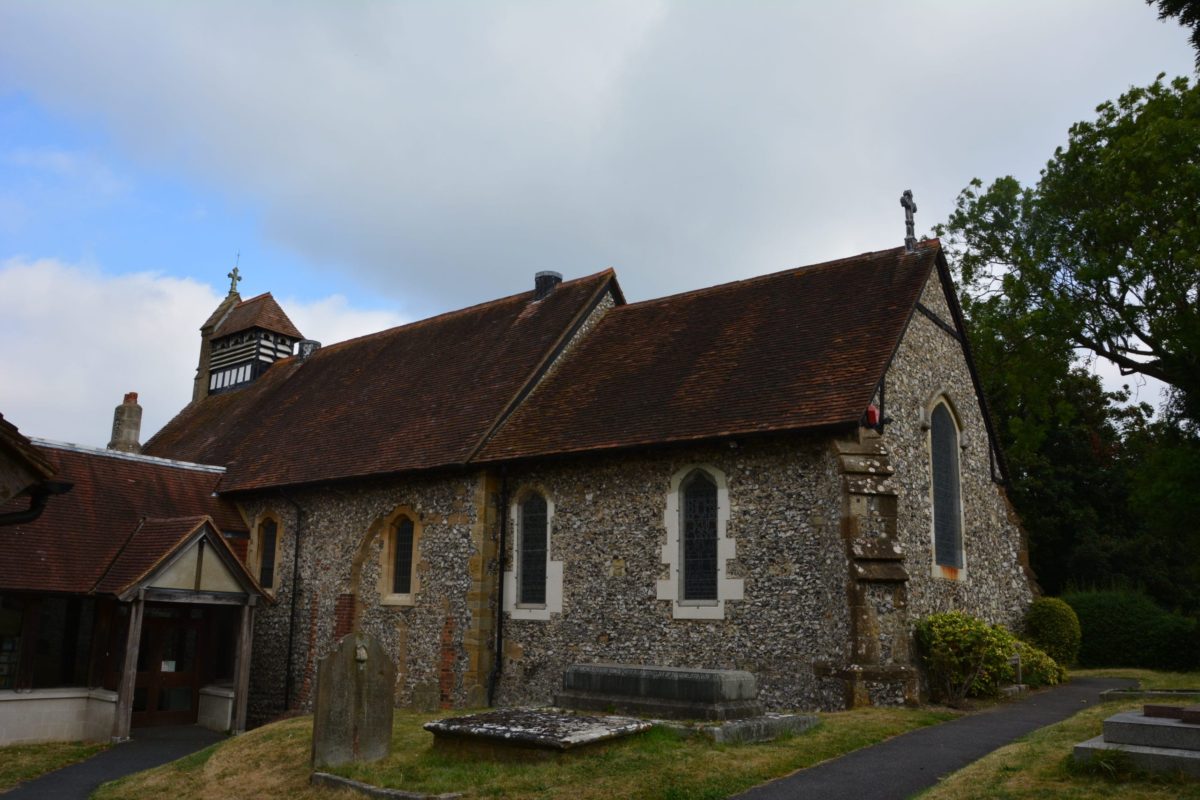Two questions often asked about this church are ‘How old is it?’ and ‘What is its dedication?’. We cannot answer either question, but can say that Keston Parish Church is a very ancient building standing on an even older site.
When the East Wall was rebuilt as a result of World War II bomb damage, excavations showed that an earlier wall existed and this is most likely part of the church which stood here in the reign of Edward the Confessor (1042-1066) valued at 100 shillings.

Below the footing of the wall an even earlier structure was found which traversed four shallow graves in chalk. A skull from the site was identified as Romano – British, dating from approximately 300-400AD. These finds indicate that the site of the Church was used as a burial ground some 1500 years or more ago.
In the reign of Henry III (1216-1272) much of the Norman chancel and nave were demolished and rebuilt, many of the Norman stones being used in the construction of the existing walls.
In the traditional place by the East Wall, South Side, are the remains of a piscina basin damaged, in all probability, by Cromwellian soldiers.
In the mid 17th century Puritan mobs damaged churches throughout the land and Keston did not escape. Parish records record in 1645… ‘On the 23rd April our church was defaced, our font thrown down and new forms of prayer appointed’.
The chancel is known as a ‘weeping chancel’, in that it is not built in line with the nave but is inclined to the North side. This was customary in the building of ancient churches, following the tradition that Christ’s head fell on his right shoulder when on the cross.
Inserted in the altar is part of the top of a 17th century communion table which is inlaid with a cross bottonee and inscribed ‘The Keston Marke’ and below this, ‘In Hoc Signo Vinces’ (In this sign shalt thou conquer). This cross was carved in the front of the old pulpit which has now been removed and the cross is displayed on the wall to the left of the Sanctuary. The Marke is also inlaid in the Bishop’s chair in the Sanctuary.
The East window was installed in 1952 to replace the window destroyed by the bomb damage during the war. The chancel arch dates from the 13th century and rests on the old Norman pillars.
By the chancel in the South side of the nave wall, is a filled in archway. A point of interest here is the impost which has a human face carved on its side, dating from early Norman times. Originally it was thought that this archway led to a chantry chapel, but excavations outside the church within this area revealed the foundations of a tower built in the reign of Henry III and which was demolished, it is said, by lightning in the early 17th century. The excavation also revealed within the tower foundation area the family vault of John Pepys, a relative of the famous 18th century diarist, Samuel Pepys.
The plaque from the coffin of John Pepys can be seen on the South wall opposite the site of the vault outside.
To the West of this and opposite the present doorway, the original entrance to the Church can be seen. When the Church Rooms were built in 1992, this door was re-opened for the first time in centuries. Adjacent to the South Door is a board giving the names of the Rectors of Keston. The first recorded name is Henry de Baix and the first recorded date is 1207 (William of Taunton) and the list is continued through the centuries.
A painting of Moses, dating from the 18th century is sited in this area. Originally there were two such paintings, the other being of Aaron, Moses’ brother but unfortunately, this was stolen in 1971.
The original gallery was built in 1733 for ‘Young men and servants’ and rebuilt when the nave was lengthened in 1880 and the present vestry and porch were added. The chime of six bells was the gift of the Countess of Derby in 1887 and are said to be the lightest in Kent.
The new movable font, commissioned especially for the Millennium, replaces an older Victorian Font which was installed in 1887.
Throughout all these changes there still stands this Church with its people, worshipping week by week, a positive, living witness to the community of the unchanging love of God and pointing to the future with that same certainty.